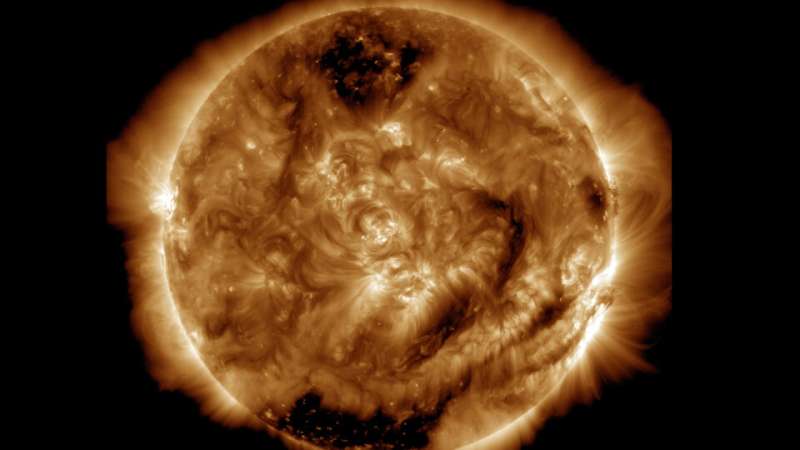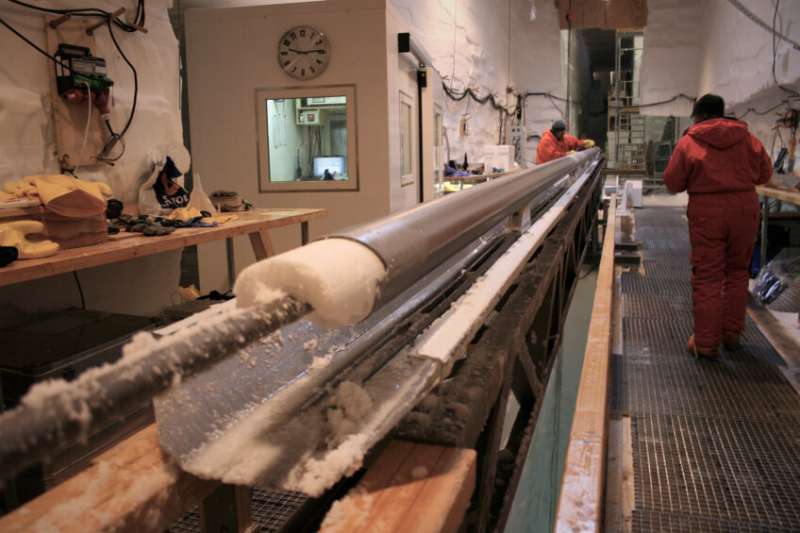Credit: NASA/SDO/AIA/LMSAL
Through analyses of ice cores from Greenland and Antarctica, a research team led by Lund University in Sweden has found evidence of an extreme solar storm that occurred about 9,200 years ago. What puzzles the researchers is that the storm took place during one of the sun's more quiet phases—during which it is generally believed our planet is less exposed to such events.
The sun is a prerequisite for all life on Earth. But our life-giving companion can also cause problems. When there is strong activity on the surface of the sun, more energy is released, something that can give rise to geomagnetic storms. This in turn can cause power outages and communication disturbances.
Predicting solar storms is difficult. It is currently believed that they are more likely during an active phase of the sun, or solar maximum, during the so-called sunspot cycle. However, the new study published in Nature Communications shows that this may not always be the case for very large storms.
"We have studied drill cores from Greenland and Antarctica, and discovered traces of a massive solar storm that hit Earth during one of the sun's passive phases about 9,200 years ago," says Raimund Muscheler, geology researcher at Lund University.
The researchers scoured the drill cores for peaks of the radioactive isotopes beryllium-10 and chlorine-36. These are produced by high-energy cosmic particles that reach Earth, and can be preserved in ice and sediment.
Analyzing ice cores led the researchers to their surprising results. Credit: Raimund Muscheler
"This is time consuming and expensive analytical work. Therefore, we were pleasantly surprised when we found such a peak, indicating a hitherto unknown giant solar storm in connection with low solar activity," says Raimund Muscheler.
If a similar solar storm were to take place today, it could have devastating consequences. In addition to power outages and radiation damage to satellites, it could pose a danger to air traffic and astronauts as well as a collapse of various communication systems.
"These enormous storms are currently not sufficiently included in risk assessments. It is of the utmost importance to analyze what these events could mean for today's technology and how we can protect ourselves," concludes Raimund Muscheler.
More information: Chiara I. Paleari et al, Cosmogenic radionuclides reveal an extreme solar particle storm near a solar minimum 9125 years BP, Nature Communications (2022). DOI: 10.1038/s41467-021-27891-4
Journal information: Nature Communications
Provided by Lund University

























